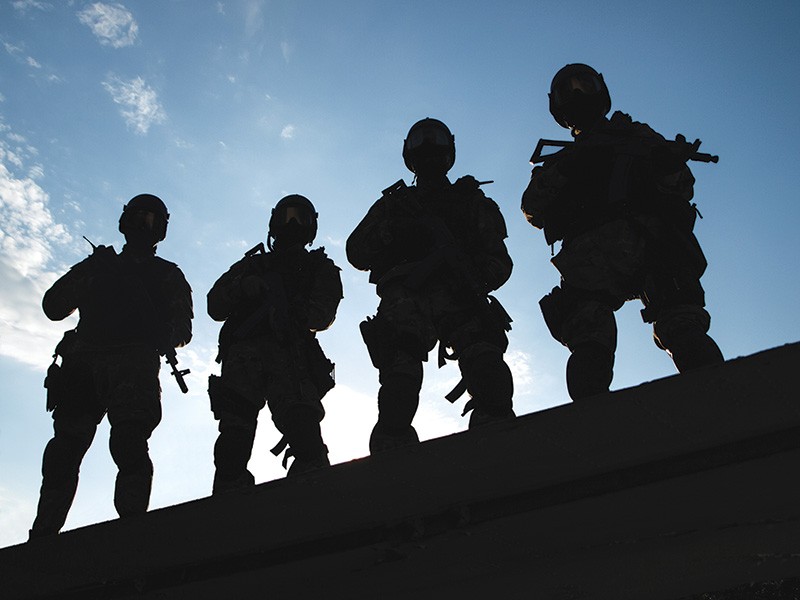In the wake of unrest in Ferguson, Mo., where a white police officer killed a black teen on Aug. 9, “police-militarization” fever has gripped the country. Images of tear-gassed children and loaded weapons shoved in protesters’ faces raises hard questions about a Defense Department program that provides military surplus to law enforcement.
Should the police have all that gear? The New York Times “Upshot” page released a spreadsheet that lays out items acquired by law enforcement through the DoD’s 1033 program. The equipment is free for localities except for shipping. While not all of it is weaponry, in the wake of Ferguson, President Obama said he might shut the whole program down.
From 2006 to 2014 California accepted more than $90 million in military surplus. Napa, Sonoma and Marin counties account for at least $1.3 million and acquired everything from bayonets to leaf blowers.
MARIN COUNTY
Marin County received at least $347,238 worth of surplus from 2006 to 2014, including 12 assault rifles equipped with 5.62 mm barrels.
By way of comparison, hyper-twitchy Orange County added
350 rifles to its arsenal over that same time, split between 5.62 mm and 7.52 mm caliber.
Marin County also acquired dozens of night-vision goggles. Beyond that, the Marin kit is packed with mechanics’ tools, lots of first-aid gear, two rawhide mallets and a $14,000 “turret assembly kit.”
The Marin County Sheriff’s Office was unavailable for comment in time for our deadline.
NAPA COUNTY
Napa nabbed more than $400,000 in military gear since 2006. Along with 10 rifles and 16 night-vision goggles, Napa also received five Smart Boards (an updated interactive chalkboard), a 15-piece china tea set, gym equipment and lots of riot shields.
Napa County undersheriff Jean Donaldson says the military equipment is used “primarily for search-and-rescue operations and our SWAT team, and those things aren’t designated for crowd control or situations where we have civil disobedience or demonstrations.”
He said the gear is mostly for high-risk situations involving armed suspects or school shootings with live shooters. The equipment is used to enhance public safety—it’s not meant to be used as an “intimidation factor,” Donaldson says.
Donaldson adds that Napa’s participation is a reflection of fiscal responsibility. “It is obviously more fiscally beneficial to our local taxpayers if we can utilize the surplus equipment from the military. The taxpayers have already paid for it.”
SONOMA COUNTY
Sonoma County collected at least $481,520 in military surplus between 2006 and 2014. That includes almost $50,000 in rifles, 90 of them, split between 5.62 mm and 7.62 mm versions. It also includes 30 bayonets, two utility trucks, three chainsaws and 20 boxes of dispenser soap, in addition to eight pairs of night-vision glasses, a television set, a baseball-pitching machine, bicycles, athletic gear, two drums and two cymbals.
Sonoma also acquired at least seven pouches for flash-bang grenades along with numerous pouches for M4 ammunition and hand grenades—but no sign of M4 launchers, or hand grenades for that matter.
Sonoma sheriff’s Sgt. Cecile Focha provided a breakdown of how the program works, and explained some of the acquisitions in the Sonoma manifest. The DoD separates surplus into several categories, each with its own guidelines for what a local law enforcement agency is permitted to do with inventory that winds up as local surplus. And the program is monitored by the feds—especially where it concerns weapons.
“The feds do a random annual audit, and we went through it with flying colors last year,” says Focha. “Every single rifle was accounted for. Every one, with the serial number.”
Focha also stresses that acquisitions in Sonoma County have not been made for the purpose of intimidation. “Nor have I ever seen a bayonet fixed to anything in the sheriff’s office,” she says.
The program gives law enforcement flexibility to move product to other 1033-approved agencies that might make use of it. But, says Focha, the approval process for those transfers is rigorous, since the county needs approval from DoD and the state Office of Emergency Services before it can “laterally” move the gear.
And, she says, there are clear restrictions on transferring gear that’s oriented for military use.
So while the Boys & Girls Club isn’t going to get night-vision glasses, the Sonoma County motor pool can accept mechanics’ tools originally acquired by the sheriff’s department.
The drums and cymbals? They wound up in the Oak Grove Unified School District, says Focha.











